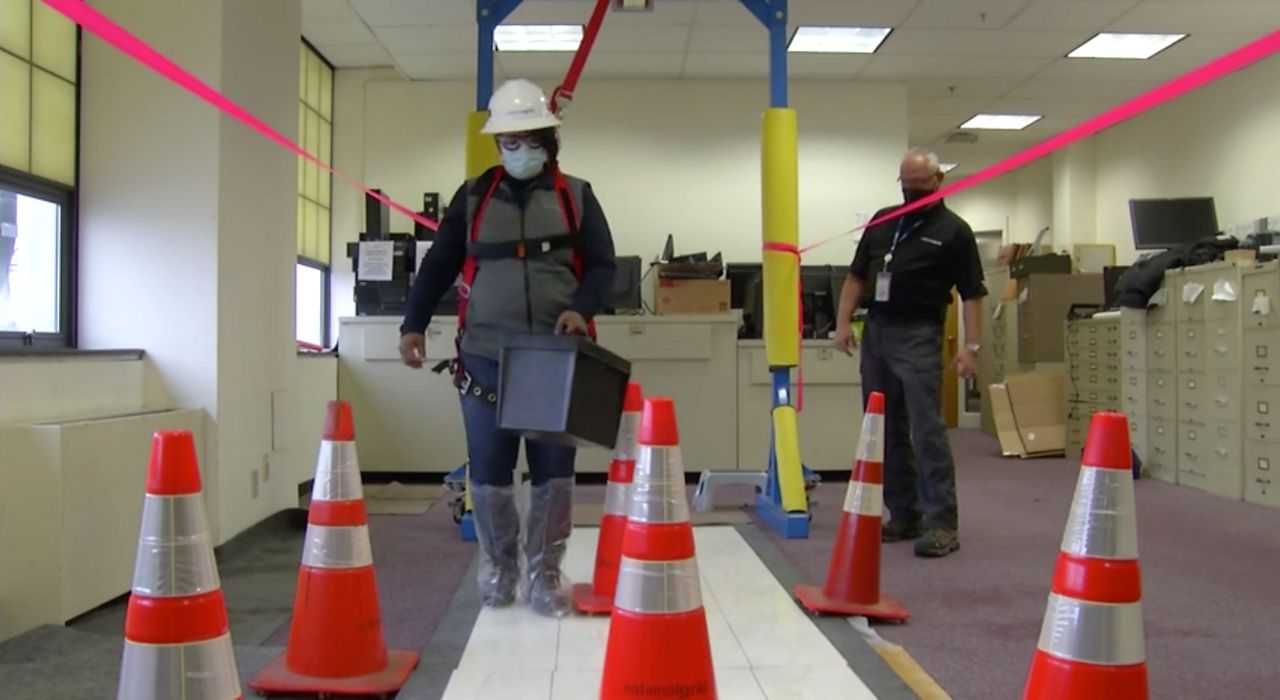The colder season is upon us, so now is a good time to focus on how to avoid slips and falls when the ground turns slick.
Whether you step out on the front stoop to get the mail or walk across a parking lot, this time of the year can be very tricky for getting around safely due to slippery conditions.
What You Need To Know
- Most outdoor slips and falls occur during the morning
- By following a few simple tips, you can safely navigate across a slick ground
- Ice is not the only ground condition that leads to slips, trips and falls
Plunging temperatures, rain, snow and ice coupled with longer nights and shorter days can create treacherous surfaces that lead to slips and falls.
I recently toured National Grid's safety training course and learned some key tips from the safety experts on how to safely navigate across slippery ground.
Andrew Prestigiacomo, the lead safety trainer at National Grid, teaches skills using a machine called the slippery surface simulator.
His staff is classroom-trained to get the idea of safety expectations out in the field. They also train through a physical slippery surface simulation model. The simulator is a heavy-duty contraption with a slick surface, where they secure employees into a harness system attached to a track above.

Linda Epps, a customer meter services representative, was kind enough to work through a demonstration on the slippery surface simulator.
As Linda attempted to walk the simulator path at a normal, swift pace, she ended up slipping, sliding and losing her footing. She made another attempt, following the proper methods, and her journey across the platform became much more steady.
What are Andrew's pointers for walking safely on ice? "Keep the head up, shoulders square, stay slightly bent at the knees and take short, flat-footed steps." He recites these tips as he surveys how students apply them as they walk on the simulator.
With a bit of practice, these tips yield a successful journey on slippery ground.
Linda was grateful to learn these skills to keep from falling, and she applies them regularly "when ice covers the driveway." She also said, "when walking through a parking lot to go grocery shopping, I take smaller steps. So, yes, it helps in everyday life and not just here at National Grid."
Andrew also explains how ice isn't the only slip, trip and fall ground hazard out there. "People don't realize that wet leaves can be just as slippery as ice or black ice."
Here are some more tips to avoid ice-related slips, trips and falls.
Keep a keen eye on your local weather forecast for the latest conditions as temperatures plunge.
Only walk on designated, lighted walkways, especially those treated with ice melt.
Wear footgear that provides traction, like shoes or boots with gripper soles.
And here's another reminder from Andrew that will save you from slip and fall injury. "Take that three-second breath and then proceed. You know, survey the scene."



